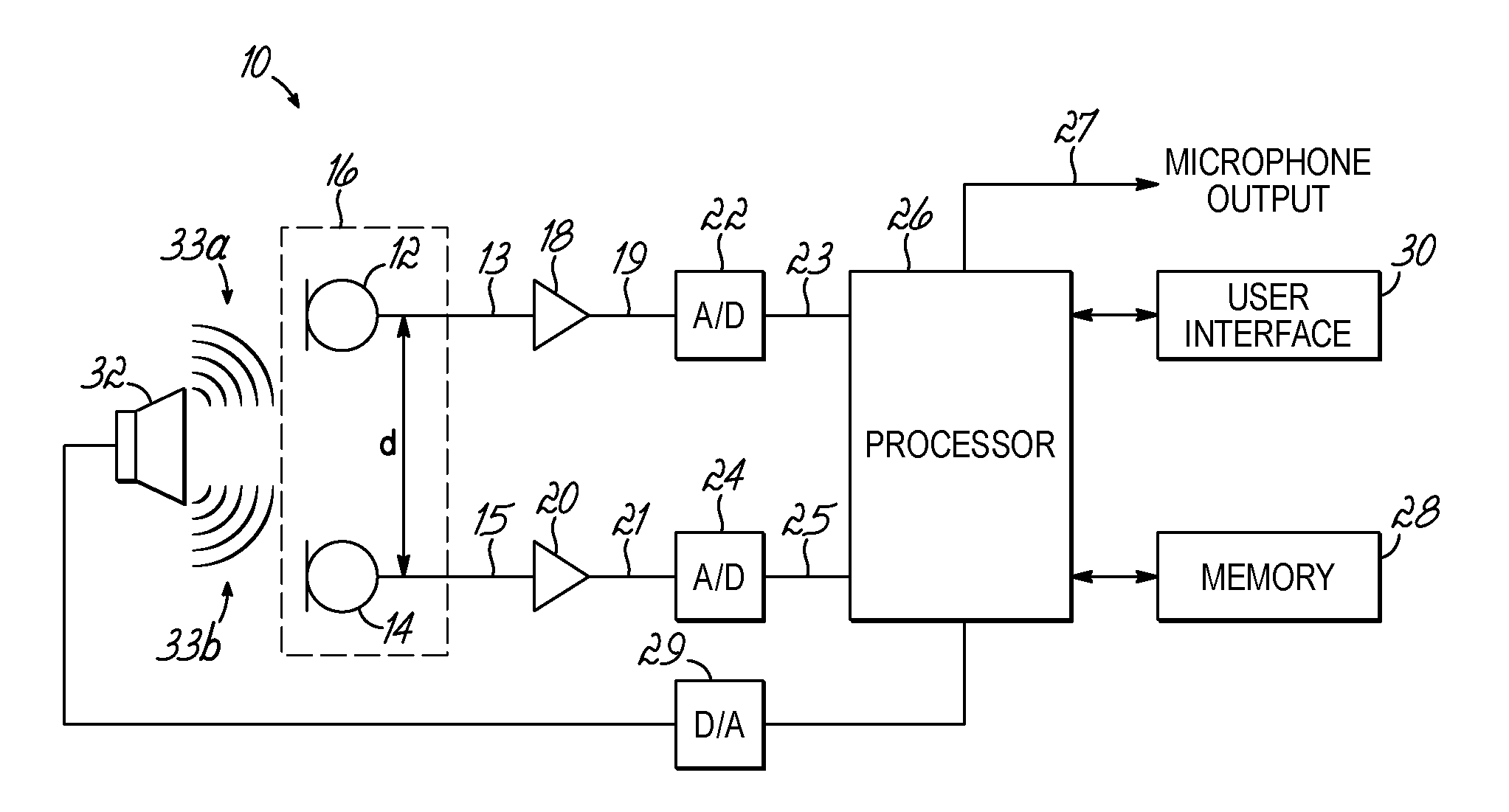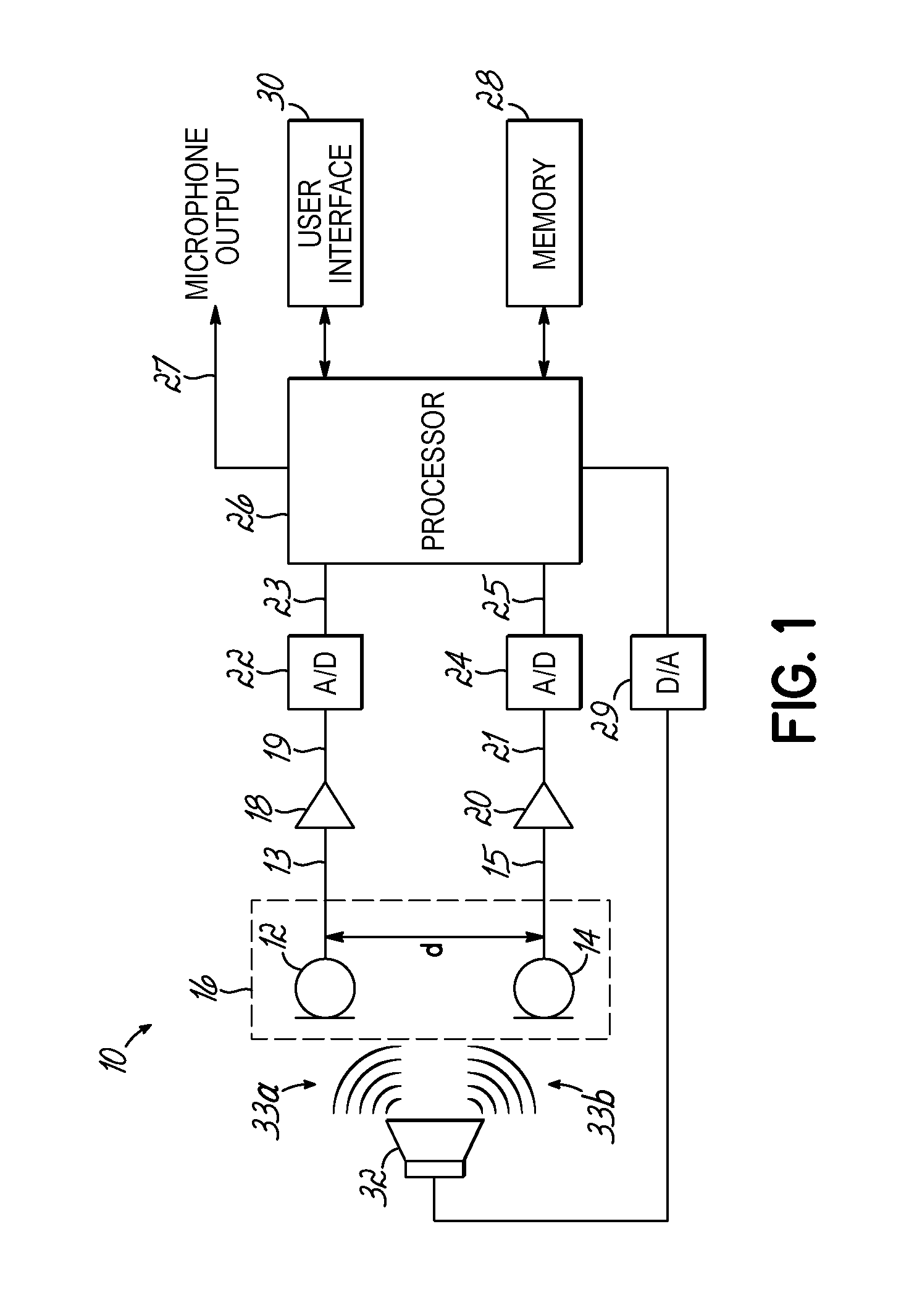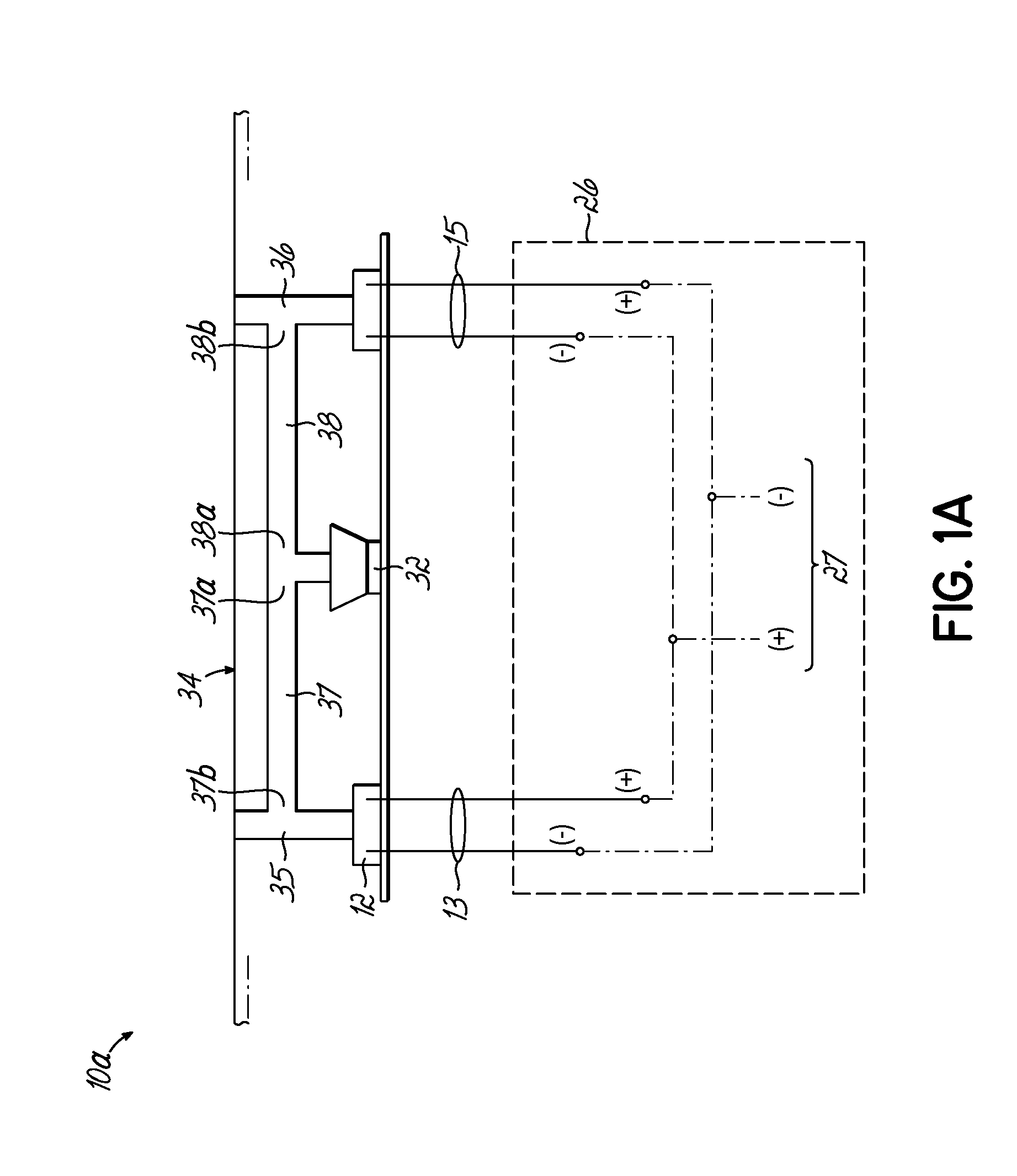Self calibrating multi-element dipole microphone
a dipole microphone and multi-element technology, applied in the direction of electrical transducers, electrical transducers, transducer types, etc., can solve the problems of high ambient noise levels in voice-directed or voice-assisted systems, affecting and affecting the ability of other listeners to understand or recognize speech recognition systems. achieve the effect of maintaining the performance of the microphone over tim
- Summary
- Abstract
- Description
- Claims
- Application Information
AI Technical Summary
Benefits of technology
Problems solved by technology
Method used
Image
Examples
Embodiment Construction
[0021]To provide optimum noise cancelling performance, the outputs of two acoustic sensors comprising a microphone are each adaptively filtered so that the filtered responses of the sensors are matched. The filtered responses may then be combined so that the sensors form a microphone having the characteristics of a dipole microphone. However, the present invention is not limited to only dipole microphones, and microphones having other patterns may be formed. A sound source is included as a part of the microphone to provide acoustic calibration signals to the sensors comprising the dipole microphone. Periodically, the sound source may be excited with one or more calibration signals, and the responses of the sensors measured. Based on the measured responses, a processor determines one or more correction factors, which are used to generate digital filter coefficients. The digital filtering adjusts the sensor outputs, so that when the outputs are summed, they result in a differential ou...
PUM
 Login to View More
Login to View More Abstract
Description
Claims
Application Information
 Login to View More
Login to View More - R&D
- Intellectual Property
- Life Sciences
- Materials
- Tech Scout
- Unparalleled Data Quality
- Higher Quality Content
- 60% Fewer Hallucinations
Browse by: Latest US Patents, China's latest patents, Technical Efficacy Thesaurus, Application Domain, Technology Topic, Popular Technical Reports.
© 2025 PatSnap. All rights reserved.Legal|Privacy policy|Modern Slavery Act Transparency Statement|Sitemap|About US| Contact US: help@patsnap.com



